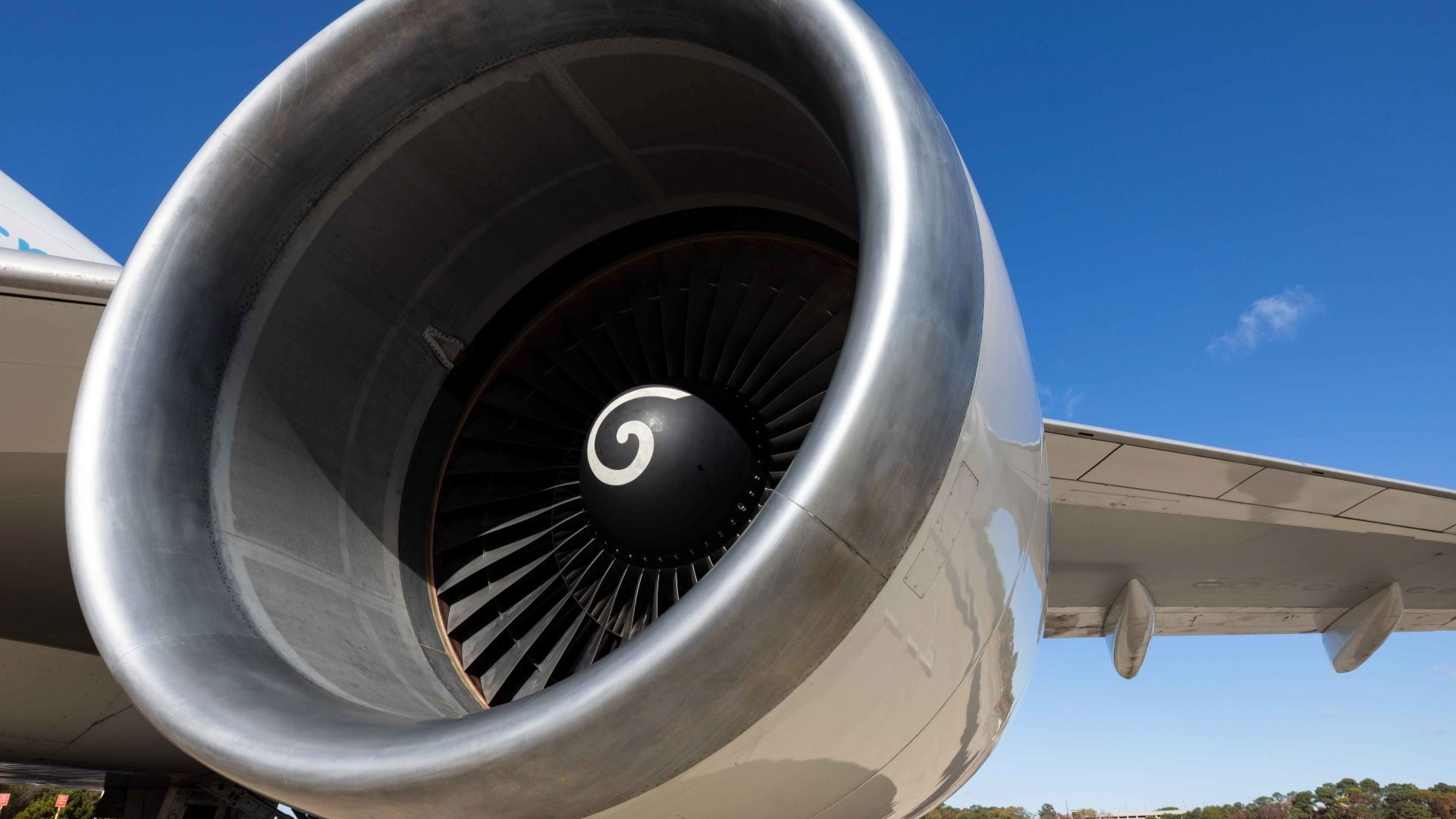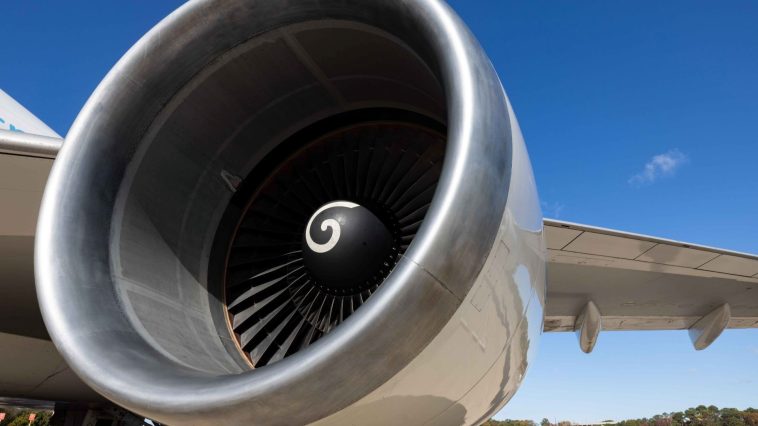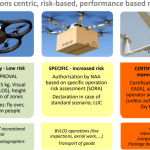
Celebrating Innovation and Longevity in Aerospace
The aerospace industry is no stranger to constant innovation and the pursuit of excellence, and one shining example of this is GE Aerospace’s iconic CF6-80C2 engine. Celebrating 40 years of service, this workhorse has not only demonstrated impressive durability and efficiency over the decades, but has also played a pivotal role in shaping global air trade. From powering a vast array of commercial aircraft to underpinning the rapid growth in air cargo, the CF6 engine family stands as a testament to steady, long-term success in an ever-evolving industry.
As we take a closer look at the engine’s journey, it’s hard not to marvel at how one innovation can influence multiple sectors—from small business logistics to large-scale industrial manufacturing. With its origins anchored in military technology and subsequent evolution into one of the most reliable commercial engines, the CF6-80C2 symbolizes the blend of cutting-edge engineering with the practical demands of everyday aviation.
A Testament to Reliability in a Competitive Market
When we consider the history of commercial aviation, the CF6 engine family has been nothing short of revolutionary. Its ancestry can be traced back to the technology of the TF39 military engine, and since its first introduction on the McDonnell Douglas DC-10-10 in 1971, the CF6 has undergone numerous enhancements. Today, multiple variants—from the CF6-50, CF6-80A, to the flagship CF6-80C2 and CF6-80E1—illustrate how evolutionary design can meet the shifting demands of the market.
Reliability in this sector is critical. Airlines and freight companies alike must rely on engines that are tough enough to withstand daily operations, and dependable enough to minimize delays and maintenance issues. GE Aerospace’s CF6-80C2, with its impressive record, has proved that a mid-decade engine can retain its effectiveness even as fleets age and demand increases. Through its detailed performance enhancements, the engine has become a key asset for any fleet manager seeking stability and efficiency in a competitive market.
Driving the Global Air Freight Industry
The influence of the CF6 engine on the global air cargo market cannot be overstated. Catering to nearly 70% of the world’s widebody airplanes dedicated to cargo transportation, this engine family is integral to the massive logistics network that supports global e-commerce and international trade.
Air cargo logistics thrives on predictable performance. As older passenger aircraft are converted into freighter models to meet growing demand, the CF6 engine’s enduring reputation for reliability ensures that these planes stay on schedule and avoid unexpected downtime. This consistent performance is especially important when companies are tasked with managing the tricky parts of logistics—ranging from fluctuating global demand to the intimidating challenges of international regulatory environments.
Key Contributions to Global Cargo Transport
- Operational Continuity: The long service life keeps fleets ready for high-frequency operations.
- Lower Maintenance Costs: Engines that can operate longer without overhaul help reduce operational interruptions.
- Enhanced Performance: Upgrades over decades have boosted fuel efficiency and performance stability.
- International Operations: Extended-range approvals have paved the way for flights over vast oceans.
According to GE Aerospace CF6 Program Leader Nate Hoening, the CF6 engine is, in many ways, the secret ingredient behind the explosive growth in air cargo. Whether it’s delicate items like roses on Valentine’s Day or high-value technology components, this engine has been tirelessly facilitating global logistics with a reliability that few competitors can match.
CF6-80C2’s Role in Transforming Commercial Aviation
One of the most impressive achievements of the CF6-80C2 is its historical importance in commercial aviation. Not only does this engine have the largest installed base of any widebody engine in history, but its widespread adoption is also a sign of its continual evolution. Since its first service entry with Thai International Airlines in 1985, GE Aerospace has installed more than 5,600 units of this engine, with 2,900 still active today. Such a longevity story is rare, and it points to a combination of superior design, exceptional maintenance support, and industry trust.
Appealing to both legacy aircraft and modern conversions, the CF6-80C2 has delivered the power required for some of the most notable aircraft names in aviation history. It has powered jets across a broad spectrum—from the McDonnell Douglas MD-11 and Boeing 747 to the Airbus A300 series. Its versatility even extends to military applications, like the U.S. Air Force’s Lockheed Martin C-5M Super Galaxy, affirming its crucial role not only in commercial but also in defense aviation sectors.
Legacy and Modern Fleet Applications
| Aircraft Model | CF6 Variant | Usage |
|---|---|---|
| McDonnell Douglas MD-11 | CF6-80C2 | Commercial passenger and cargo |
| Boeing 747 | CF6-80C2 | Freighter conversions and test beds |
| Airbus A300/A310 | CF6-80C2 | Widebody commercial operations |
| Lockheed Martin C-5M Super Galaxy | CF6-80C2 | Military heavy-lift operations |
This table clearly shows the engine’s wide-ranging appeal. Its ability to serve diverse roles—each with its own set of tricky parts and unique operational challenges—highlights why the CF6-80C2 has become indispensable in the aviation community.
Engine Efficiency: Balancing Power, Fuel Economy, and On-Wing Time
Over a span of 40 years, the CF6 engine family has not only improved in raw power but has also achieved critical enhancements in fuel efficiency and maintenance intervals. Modernized versions of these engines are nearly 15% more fuel-efficient compared to their early counterparts, and they allow aircraft to support three times more flights between major overhauls. In an industry where every drop of fuel saved and every maintenance cycle reduced can have a large financial impact, these improvements are far from trivial.
What makes this achievement even more notable is the balancing act between robust performance and environmental concerns. Airlines operate in a league where efficiency must be weighed alongside performance, and the extended range approvals provided to engines like the CF6-80C2 have enabled long-haul flights that once seemed nerve-racking. The ability to sustain flights over challenging routes with minimal fuel wastage has put GE Aerospace’s engine at the heart of modern air travel efficiency.
Fuel Efficiency and On-Wing Time: The Crucial Metrics
- Increased Thrust Capabilities: Modern iterations offer nearly 70,000 pounds of thrust, enabling operations across a range of large aircraft models.
- Enhanced Fuel Economy: Up to 15% improvement in fuel consumption helps airlines cut costs and reduce emissions.
- Extended Maintenance Intervals: Aircraft powered by advanced CF6 variants can fly more missions between overhauls, decreasing downtime and maintenance disruption.
Such performance improvements not only support airlines in reducing operational costs but also provide a smoother, more predictable service schedule for transport companies and freight operators alike. This blend of power and efficiency is increasingly critical in today’s competitive market, where every detail—from the smallest fuel-saving measure to the reliability of an engine between trips—plays a super important role in securing financial success.
The Enduring Influence on Legacy Aircraft
There is something particularly compelling about the CF6-80C2’s long-lasting impact on legacy aircraft. The success of this engine type lies in its ability to meet the rigorous demands of older airframes while still being easily adaptable to newer operational standards. This duality makes it an attractive choice for fleets transitioning from traditional passenger service to cargo, as well as for military applications.
Airlines are consistently faced with choices when it comes to updating their fleet. The decision to retrofit an older aircraft with a modern engine like the CF6-80C2 can often involve sorting out numerous tangled issues. However, the engine’s proven track record in various jet platforms provides much-needed confidence in its enduring capability. This reassurance is especially valuable for carriers that must get around the confusing bits of managing large fleets interwoven with different maintenance regimes and certification challenges.
Advantages for Legacy Fleets
- Operational Adaptability: The engine’s compatibility with a range of aircraft facilitates smoother transitions during fleet updates.
- Cost-Efficiency for Retrofits: Utilizing established technology helps mitigate the overall expense compared to deploying entirely new engine designs.
- Emphasis on Safety and Proven Performance: Maintaining older fleets with robust engines contributes to the ongoing safety standards required in both commercial and military operations.
This strategic advantage not only extends the lifespan of legacy aircraft but also underscores the importance of a balanced approach to innovation. Rather than completely overhauling systems, the industry often benefits from carefully building on proven technology to maintain service continuity and operational reliability.
Challenges in Jet Engine Manufacturing and Maintenance
Even the most celebrated technological marvels come with their own set of challenges. In the case of the CF6 engine family, there are several tricky parts and tangled issues inherent in industry-standard practices that require ongoing attention. Manufacturing these highly complex machines involves managing a host of subtle details, from precision machining to the strict tolerances required in aerospace. For maintenance teams, the job is equally demanding, as routine checks and emergency repairs must be meticulously planned and executed.
Working through these complications often means facing what can seem like overwhelming or intimidating maintenance challenges. However, the industry has continuously adapted its techniques to handle these nerve-racking tasks. Modern diagnostic tools, predictive maintenance strategies, and advanced training programs for technicians have all played vital roles in ensuring that these engines remain in top condition despite the natural wear and tear that comes with decades of service.
Tackling the Maintenance Twist and Turn
Here are some common strategies and practices used to get around the hidden complexities of jet engine maintenance:
- Predictive Analytics: Advanced software systems analyze engine performance data to forecast potential issues before they become critical. This approach helps in scheduling maintenance at optimal intervals, thus ensuring minimal disruption.
- Comprehensive Technician Training: Continued education and hands-on experience are key in helping maintenance teams find their path through complicated repair scenarios. Specialized programs help engineers figure a path for resolving nuanced defects.
- Collaborative Problem Solving: Cross-functional teamwork between designers, engineers, and maintenance professionals ensures a broad perspective when addressing maintenance challenges. This collaboration encourages the sharing of insights to solve even the most puzzling issues.
In practice, the blend of technology and human expertise creates a resilient system capable of supporting one of the most widely used engines in aviation. While the pitfalls may be plenty and the road ahead is often loaded with issues, the successful navigation of these challenges further proves the engine’s worth and reliability over nearly half a century.
Innovation in Engine Design and Future Prospects
The CF6-80C2 series is not resting on its laurels as it continues to serve both legacy and modern fleets. Instead, it represents a continuous cycle of innovation and improvement. Today’s iterations of the engine are markedly more efficient—not only generating more thrust than earlier versions but also effectively stretching the intervals between necessary overhauls. Such advancements provide a glimpse into how future design efforts might evolve.
Innovation within the jet engine industry is a constant balancing act between enhancing performance, reducing environmental impact, and ensuring operational safety. For many fleet operators, these improvements aren’t just technical specifications; they are key attributes that define operational success and commercial competitiveness. As we see a shift in priorities with environmental standards tightening around the globe, improvements in fuel economy and emissions reduction have become super important elements in engine design.
Looking Ahead: Adapting to a Rapidly Changing Environment
Consider the following factors that are shaping the future of jet engine development:
- Sustainability and Alternative Fuels: As the aerospace industry looks to reduce its carbon footprint, engine designs are evolving to accommodate alternative fuel sources. Future iterations might incorporate hybrid technologies and other eco-friendly solutions while maintaining the proven efficiency of the CF6 series.
- Digital Transformation: Increasingly, digital tools and data analytics are being integrated into design and maintenance practices. In an era where every small distinction counts, these technologies help engineers get into the fine points of engine performance and identify opportunities for optimization.
- Enhanced Safety Protocols: The inherent safety of an aviation engine is non-negotiable. Advanced monitoring systems, coupled with smarter maintenance schedules, ensure that every flight removes the fear of unforeseen mechanical failures. This commitment to safety continues to influence how new systems are developed and verified in both testing and real-world scenarios.
Looking forward, industry experts predict that the future of aviation will involve a greater hybridization of traditional engineering with modern digital tools. The CF6-80C2, and its successors, will likely serve as a benchmark for how established technologies can be refined and integrated into a world that is increasingly focused on sustainability, cost-effectiveness, and reliability.
The Role of GE Aerospace in Shaping Industry Standards
GE Aerospace’s leadership in the field continues to have a far-reaching impact on not only the technical aspects of jet engine design but also on broader trends within aviation. By consistently pushing the envelope on what is possible and refining the CF6 platform over decades, GE has set standards that influence everything from small business logistics to large-scale industrial manufacturing. Their approach embodies a blend of proven efficiency and continuous improvement that other companies often emulate.
The company’s willingness to update and enhance its products—while still relying on a legacy of quality and durability—reminds us that progress often happens in subtle steps rather than leaps and bounds. Even as the industry deals with many tangled issues and the occasional intimidating setback, GE Aerospace’s commitment to research and development remains a guiding light for the entire sector.
Influence Beyond the Engine Room
Beyond technical developments, GE Aerospace has also played a critical role in shaping industry practices. Some of the subtle details of best practices in maintenance, environmental responsibility, and operational safety are shared widely across the market through various partnerships and collaborative projects. Here are a few notable impacts:
- Industry Partnerships: Collaborations with airlines, defense sectors, and manufacturing partners help set benchmarks for both safety and innovation.
- Investment in Workforce Training: By investing in skilled labor and continuous technician education, the company ensures that the knowledge required to manage these high-performance engines is passed on to the next generation.
- Commitment to Sustainable Practices: GE Aerospace’s initiatives in sustainable aviation push the envelope on reducing emissions and promoting cleaner operational practices—an effort that benefits the industry as a whole.
This far-reaching influence has had a ripple effect across many related industries. As companies and governments alike focus on balancing economic growth with environmental and safety concerns, the tried and tested technology of the CF6 family becomes more valuable than ever, showcasing how persistent innovation and a commitment to quality can help steer through even the most tangled issues.
Economic Impact and Small Business Opportunities
The enduring legacy of the CF6 engine isn’t limited to large airlines or defense sectors—it also provides unexpected advantages for small businesses and regional players. The operational cost savings, reduced maintenance downtimes, and improved fuel efficiency directly contribute to a more robust economic framework. When small logistics companies or regional carriers can count on an engine that delivers flight after flight without interruption, they are better positioned to grow and compete in both local and international markets.
Moreover, improved aviation reliability creates a more stable environment for related industries. Suppliers, maintenance contractors, and even tech startups specializing in aerospace solutions find themselves benefiting from the high standards set by industry giants like GE Aerospace. In a landscape where figuring out the complicated pieces of economic trends is often nerve-racking, the proven performance of the CF6 system offers a solid foundation for future growth.
Opportunities for Small and Medium Enterprises (SMEs)
Small and medium enterprises can leverage the benefits of the CF6 technology indirectly through:
- Reduced Logistical Costs: Enhanced reliability and extended maintenance intervals reduce unexpected expenses, making budgeting easier for SMEs.
- Improved Supply Chain Management: A dependable air cargo network helps small businesses ensure timely delivery of vital components and products.
- Technology Partnerships: Opportunities exist for local companies to offer specialized maintenance services and digital monitoring solutions, capitalizing on the industry’s continuous drive for innovation.
By creating a more predictable environment, the CF6 engine has helped contribute to a broader economic confidence that supports small business growth. In turn, these small businesses fuel larger trends in economic development, proving that even pieces of machinery developed decades ago can have a super important impact on modern commerce.
Modern Marketing and Customer Engagement in Aerospace
From a marketing perspective, the long and shining history of the CF6 engine offers a fascinating narrative of endurance, reliability, and continual adaptation. Today’s marketing professionals in aerospace and related sectors often showcase such enduring technologies as icons of American innovation, tying these success stories to broader themes of trust and long-term performance.
Customers today are not just looking for technical specifications; they want to know that the product they depend on for their most critical operations has been tried, tested, and refined over decades. This storytelling approach in marketing leverages detailed case studies, testimonials, and even historical performance data to make a persuasive case for technology that has truly withstood the test of time.
The Power of a Well-Told Story in Business Marketing
- Heritage Marketing: Highlighting a 40-year legacy helps clients feel that they are investing in proven, time-tested technology.
- Data-Driven Narratives: Sharing detailed performance metrics like fuel efficiency improvements and increased flight cycles builds trust and reinforces the engine’s reliability.
- Emotional Connection: By tapping into the historical significance and consistent performance of the CF6 engine, marketing initiatives can resonate with audiences on both an emotional and practical level.
This approach bridges the gap between the complex technical details and the everyday needs of customers—from multinational airlines to community-focused businesses. It illustrates how a successful piece of technology, even one with decades of history, can adapt its narrative and continue to inspire confidence in today’s rapidly changing market environment.
Conclusion: The Continuous Quest for Aerospace Excellence
As we reflect on the remarkable 40-year journey of GE Aerospace’s CF6-80C2 engine, it becomes evident that its success is not a story of momentary triumph but of sustained effort, continual innovation, and a deep-seated commitment to quality. With origins rooted in military engineering and a legacy that spans across commercial and defense aviation, the CF6 represents the very best of what enduring technology can achieve.
The engine’s proven track record in powering millions of flights worldwide, facilitating the explosive growth of the air cargo industry, and even driving small business and regional economic opportunities is a testament to its enduring influence. While the industry continues to face its own set of tricky parts and intimidating challenges—from evolving environmental standards to the ongoing need for enhanced safety measures—the CF6-80C2 remains a beacon of reliability and efficiency.
Looking to the future, there is a clear path paved by continued innovation, smarter maintenance practices, and a relentless drive to meet both the current needs and future aspirations of the aerospace industry. As manufacturers, operators, and even small business proprietors find their way through the fine points of daily operational challenges, the enduring legacy of the CF6 engine offers not only a rich historical perspective but also a guide for what sustainable, long-term success can look like.
In this ever-changing landscape, where every small twist or turn in technology can have far-reaching implications, the CF6-80C2 stands as a reminder that progress is incremental and built on trust, meticulous design, and an unwavering commitment to meeting the needs of a global market. Whether you’re a seasoned industry veteran or a newcomer trying to figure a path through the maze of modern aviation, the legacy of the CF6 engine is a powerful narrative of resilience, adaptation, and triumphant innovation.
GE Aerospace’s success in continuously updating and reimagining its engine technology is a case study in how a company can remain super important over decades. By managing to keep the engine’s performance at the forefront of operational reliability and efficiency, even in the face of shifting market demands and challenging global conditions, GE Aerospace has secured its place not just in the annals of aerospace history but also as a leader guiding future advancements in aviation technology.
In the end, the story of the CF6-80C2 is not merely one of technical specifications or power curves; it is a narrative about dedication, continuous improvement, and the delicate balance between innovation and tradition. It speaks to all who are involved in the aviation industry—from the maintenance crews sorting out everyday challenges to the executives making strategic decisions, and even the small businesses that benefit from more predictable air cargo logistics. The engine’s journey is a powerful reminder that true success in any industry comes from harnessing the potential of enduring technology while never losing sight of the need to adapt and innovate.
As we cast our eyes to the next generation of aerospace achievements, the CF6-80C2 continues to serve as an inspiring example. Its legacy is a blend of robust design, practical efficiency, and a commitment to excellence that will undoubtedly guide the evolution of future aerospace advancements. In every twist and every turn of the aviation sector, the CF6 engine remains a dependable ally—a symbol of what is possible when a company dares to invest in long-term, sustainable progress.
The journey is ongoing, and as GE Aerospace and its peers continue to push boundaries, one thing is clear: the pursuit of aerospace excellence is far from over. The CF6-80C2, with its enduring performance and remarkable history, will continue to light the way forward for innovation, reliability, and transformational success in the skies for decades to come.
Originally Post From https://www.geaerospace.com/news/articles/still-going-strong-ge-aerospaces-cf6-80c2-celebrates-40-years-changing-world
Read more about this topic at
Engineered for Endurance
Engineered For Endurance: 6-Week Strength Training …


